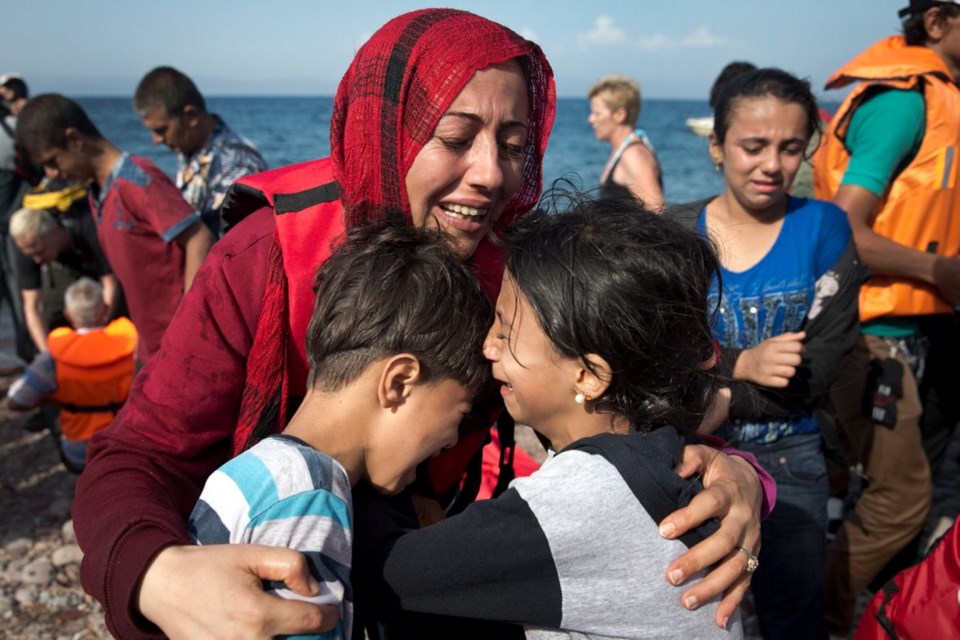Abdibasi Ahmed Hussein hasn't spoken a word in eight years. Not since a cruise missile killed the 14-year-old boy’s father and brother in Mogadishu, Somalia, in 2008. Since then, over half his life has passed in Dadaab, Kenya, the world’s largest refugee camp.
Abdibasi’s frustrated mother recently told Canadian journalist Michelle Shephard that there is little support to help her deal with her son’s severe PTSD. He was just starting to show signs of recovery when a 2012 terrorist bomb attack in Dadaab shattered his mind again.
Thousands of children have been born and raised in Dadaab, never knowing any life but that of a refugee, no home other than a tent. Next year marks the 25th year of its interminable existence.
The heart-rending image of Alan Kurdi dead in the sand, as though sleeping peacefully, sparked a global mobilization to aid Syrian refugees. But while they number more than four million, Syrians still only represent one fifth of the almost 20 million refugees in the world today — the greatest global refugee population since the Second World War. Refugees such as Abdibasi and his mother aren’t making world headlines, but their plights are no less desperate.
While Canadians open their homes and wallets to Syrian refugees, here are some of the others we cannot allow to be forgotten.
Sub-Saharan Africa
To this day, we are haunted by the memory of a Somali father standing in line to be admitted to Dadaab in 2011, desperately clutching his eight-year-old son’s hand. In a whisper, he told us his wife and other three children did not survive the journey. They lie in shallow roadside graves somewhere between Somalia and Dadaab.
The sprawling camp of more than 350,000, mostly Somalis, has been called an open-air prison. Shephard, who has visited Dadaab several times, tells us little has changed since her first trip in 2006. “My god, these people are living in limbo,” she says.
This summer, funding shortages forced the World Food Program to cut back food aid to Dadaab.
With ongoing violence in South Sudan, Somalia and the Central African Republic, there are now more than three million refugees living in exile in sub-Saharan countries like Kenya, Ethiopia, Sudan and Uganda.
Aghanistan
Before chaos descended on Syria in 2011, the biggest source of refugees in the world was Afghanistan. More than five million Afghans fled the conflict that followed the 2001 fall of the Taliban. While many have subsequently returned, the UN refugee agency knows of at least 1.65 million Afghan refugees in Pakistan and 950,000 in Iran, where they face constant government persecution and, in Pakistan, violent Taliban attacks. To escape horrible conditions, thousands of Afghans have made their way by air to Indonesia. From there, with the aid of unscrupulous human traffickers, they take ill-maintained boats across the Indian Ocean to try to reach Australia.
South East Asia
The Afghans’ shipmates are frequently ethnic minority Tamils fleeing persecution by Sri Lanka’s Sinhalese majority, and Burmese escaping regional conflicts or their country’s notoriously brutal military regime. There are more than 200,000 Tamil refugees in India and Nepal, and more than 120,000 Burmese in camps in Thailand. In the first three months of 2015, the UN estimates, 300 refugees died in boats in the waters off Southeast Asia, seeking safe harbour.
Yemen
Thousands of Yemenis have for months been crossing the Gulf of Aden in boats destined for Djibouti and Somaliland to escape civil war and Saudi bombing in their country.
The Palestinians
Millions of Palestinians still live in camps scattered across the Middle East. Some of these camps have existed since the 1950s — some of the residents are third-generation refugees.
Abdibasi did not die a telegenic death on a western beach but lingers wordlessly in an arid, overcrowded purgatory, largely forgotten by the world. “Does it take a tragedy to make people pay attention? Sadly it does,” Shephard said.
A boy died on a beach because the world ignored the Syrian refugee crisis until too late. Must more children die to make us act on all the others?
Brothers Craig and Marc Kielburger founded a platform for social change that includes the international charity Free The Children, the social enterprise Me to We, and the youth empowerment movement We Day.



